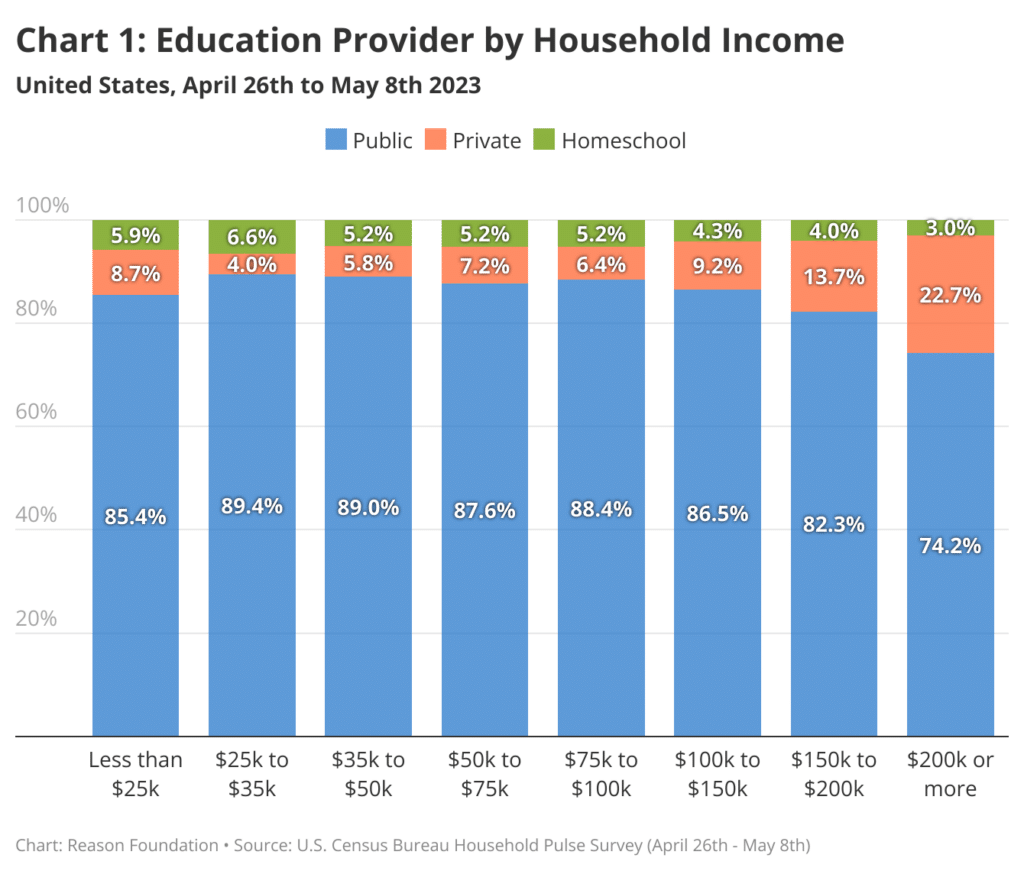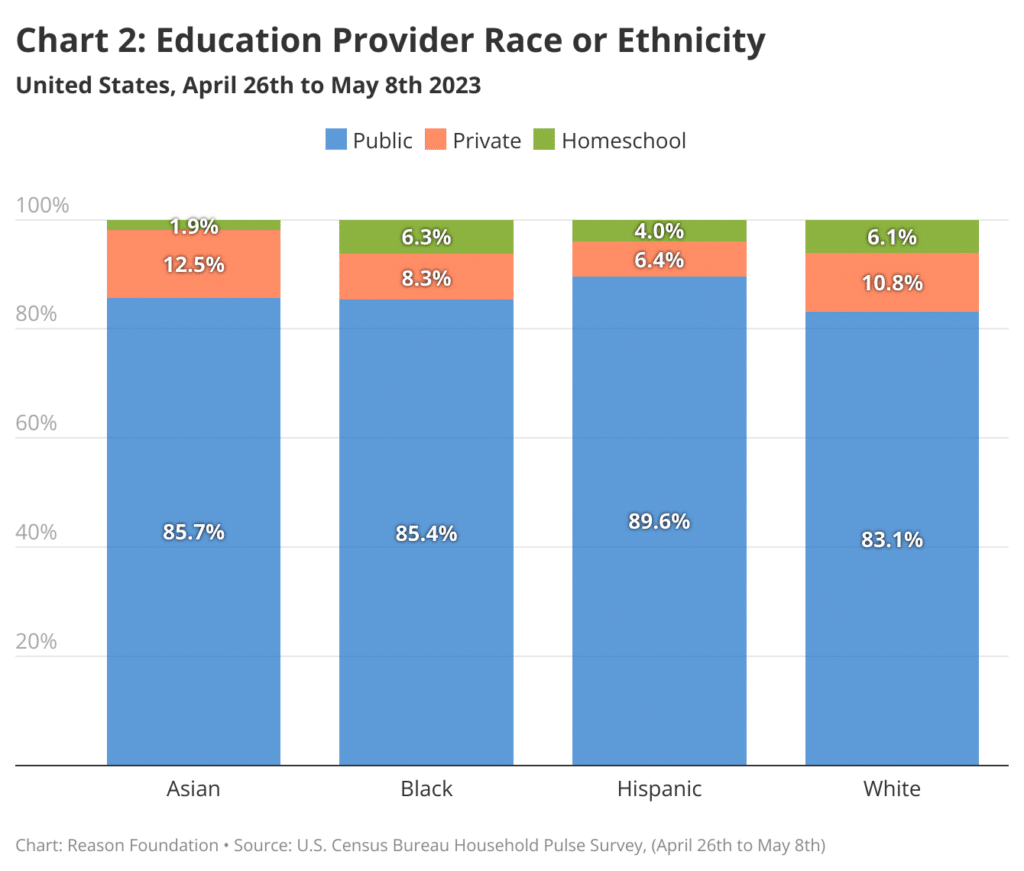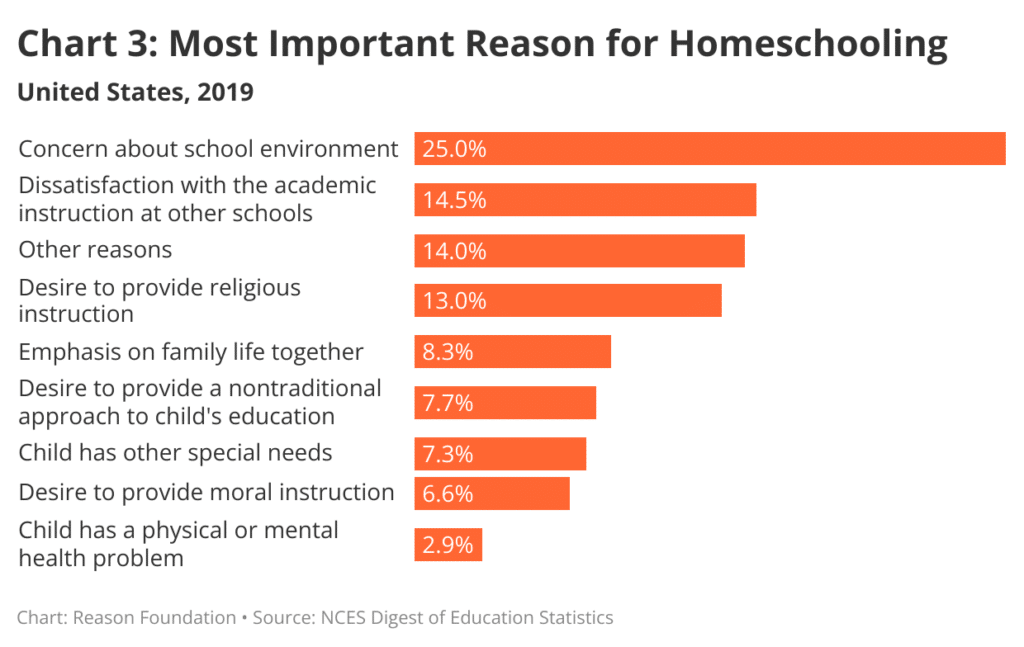The COVID-19 national emergency might be over, but parents’ desire to continue homeschooling is holding strong. That’s the key takeaway from the latest Household Pulse Survey (HPS) published by the U.S. Census Bureau. The data have notable limitations, including small sample sizes for subpopulations, but provide useful estimates of real-time national and state-level trends in K-12 education. These HPS figures based on surveys conducted from Dec. 2022 to May 2023 can be explored with Reason Foundation’s latest data tool found here.
Nationwide, the Household Pulse Survey estimates that in May 2023, 85% of students are enrolled in public schools, 9.6% attend private schools, and 5.4% are homeschooled.
HPS figures aren’t directly comparable to data collected by the National Household Education Survey by the U.S. Census Bureau due to methodological differences but suggest that the homeschooling rate has increased substantially from 2019, pre-pandemic, when 2.8% of students learned at home. Research published by the Urban Institute supports a surge, finding that homeschooling increased by 30% between the 2019-20 and 2021-22 school years in the states examined.
Broken down by demographics, a few trends emerge from HPS survey results.
First, there is an inverse relationship between income and public school enrollment, with lower-income families being more likely to attend public schools. For instance, 85.4% of families of students in the lowest income bracket attend public schools, compared with only 74.2% of families in the highest income bracket. But homeschooling appears to be less popular among higher-income households, with those making less than $100,000 reporting the greatest participation rates. Chart 1 summarizes these figures.

The data also indicate that more than 1 in 10 black and Hispanic students in the U.S. are now enrolled in private schools or homeschooling. While these student groups still attend public schools at higher rates than white students, the observed gaps aren’t quite as stark as they are with income. For example, the difference between black and white students attending private schools—2.5 percentage points—is less than the private school participation gap between the highest and lowest income brackets, 14 percentage points. In short, income seems to be a stronger predictor of public school participation than race.

Finally, while state estimates can fluctuate considerably across survey administrations, this state-level data from HPS suggest that these trends vary substantially across the country. For instance, estimated homeschooling rates for May 2023 range from less than 5% in states such as California and Connecticut to over 9% in states such as Alaska and North Carolina. These figures might lack precision, but it’s reasonable to think that differences in demographics, culture, and policy also influence what options are available for families and their decisions.
Pre-pandemic data published by National Center for Education Statistics highlight that families choose to homeschool for diverse reasons, such as concerns about school environment, dissatisfaction with academic instruction, and a desire to provide moral instruction. While much has changed since 2019, the reasons parents cited for homeschooling in 2019 are displayed in Chart 3.
Recent studies also suggest that parents are increasingly interested in non-traditional learning options for their children. For instance, polling by EdChoice has found that parents’ views toward homeschooling grew more favorable during the pandemic, and in a survey of 3,000 parents by consulting firm Tyton Partners, 52% of parents indicated a desire to direct and curate their child’s education.

The rise in homeschooling and other approaches to K-12 education seems to persist, even as the COVID-19 pandemic recedes. The Census Bureau’s Household Pulse Survey data should be interpreted cautiously, but it does equip policymakers with real-time information and support research showing a growing demand for diverse approaches to education.
You can further explore these trends with Reason Foundation’s latest education data tool found here.


